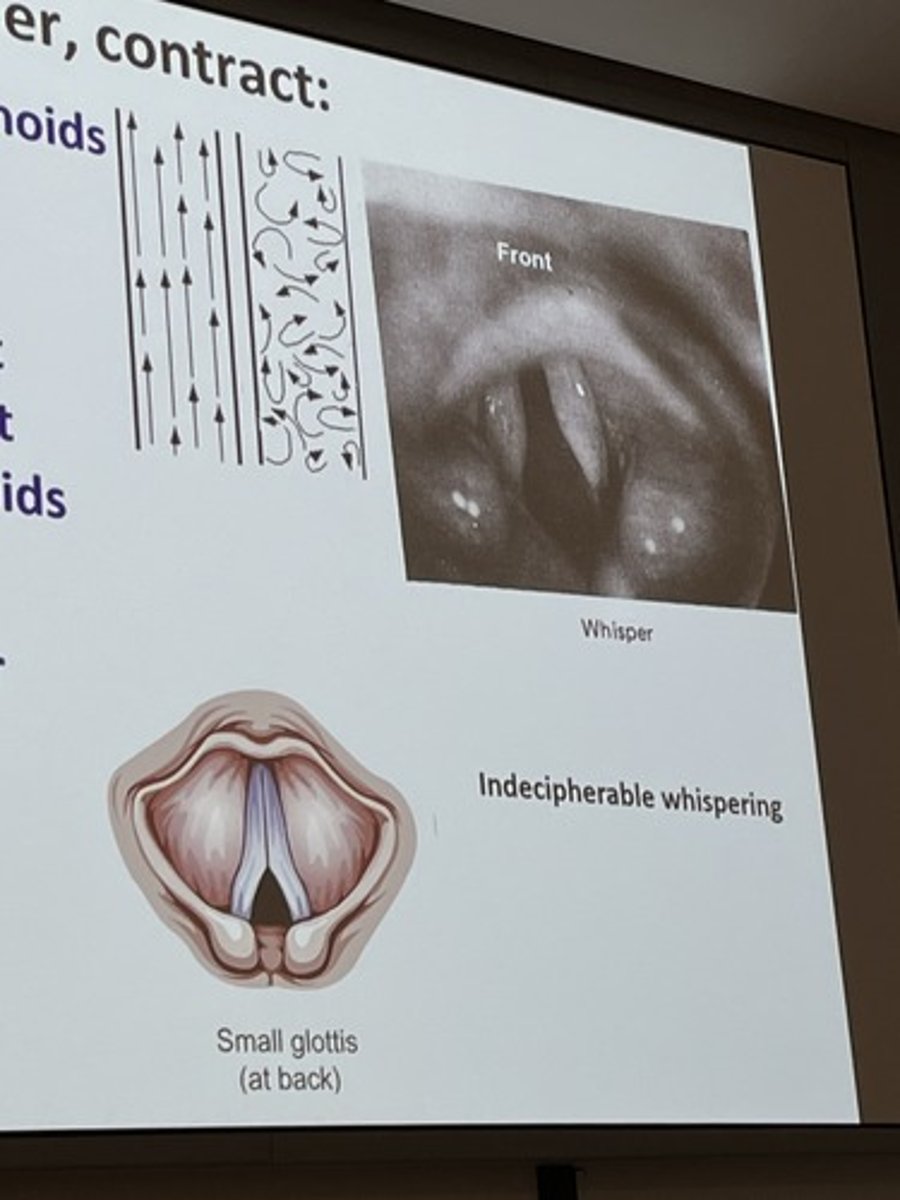Physiology: Loudness and vocal intensity
1/16
There's no tags or description
Looks like no tags are added yet.
Name | Mastery | Learn | Test | Matching | Spaced |
|---|
No study sessions yet.
17 Terms
What is loudness ?
perceptual event related to: vocal intensity or amplitude of sound or sound pressure level (db SPL)
What does loudness correspond to?
alveolar pressure
How to change loudness (vocal intensity) examples
increase loudness, decrease loudness, and whisper
we changing loudness by changing: aerodynamic and muscular forces
Aerodynamic forces:
Change volume of air
Change alveolar pressure
Muscular forces:
Change medial compression WHICH INFLUENCES→Resistance to airflow
We change loudness by changing: recall volume requirements
Quiet: use 10-15% of vital capacity above resting volume. or 50-55% VC
Convo: 20-25% of vital capacity above resting volume.or about 60-65% VC
Loud: Use 40+% of vital capacity above resting volume line or around 80+% VC
We can change loudness by changing: Recall PTP pressure requirements for loudness
quiet: 3-6 cmH20
convo- 7-10 cmh20
loud: 11-80 cmh20
We can change loudness by changing: Recall medial compression
Muscular force with which vfs are "pressed" together at midline
What does it mean if we increase medial compression?
Then:
“Firm” glottal closure
Result:
Greater resistance to air flow and alveolar pressure
What does it mean if we decrease medial compression?
Then:
“Relaxed” glottal pressure
Result:
less resistance to air flow and alveolar pressure
To increase loudness (vocal intensity)
Change aerodynamic forces:
Increase volume of air, increase alveolar pressure
Change muscular forces:
Increase medial compression
In order to: increase alveolar pressure
To increase medial compression we must:
Increase force of Adductors resulting: “firm” glottal closure
Result: increase alveolar pressure (PTP) required to initiate glottal cycle (eg. 11+ Cm H20)
as a result of greater air pressure:
Exhaled air velocity also increases
Result:
Vfs close with greater force
Possible concern: LOUD for long periods may temporarily “damage” vfs
To decrease loudness (vocal intensity)
Aerodynamic forces:
decrease volume of air
decrease alveolar pressure
Muscular forces:
Decrease medial compression
In order to:
Decrease alveolar pressure
To decrease medial compression
Minimize force of Adductors resulting in “Relaxed” glottal closure
Result: decrease alveolar pressure (PTP) required to initiate glottal cycle (e.g. 3 cm H20)
as a result of less air pressure
- Exhaled air velocity also decreases
- Result: vfs close with less force
In contrast to LOUD:
Soft or conversational loudness for long periods less likely to damage vfs
To initiate whisper, contract:
Lateral cricoarytenoids
Action:
Vfs adducted, but triangular gap left between arytenoids
Result: creates “whisper triangle”

To whisper (minimal vocal intensity)
- Aerodynamic forces: Maintain steady air flow
-Muscular forces: Adjust vf position so no phonation occurs -
- BUT: airflow becomes turbulent and audible as: hissing sound